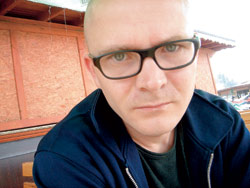
Rietveld Utrecht Chair
Photo thanks to Christie’s
Italian manufacurer Cassina claims:
Advertising announcement appeared in the “Corriere della Sera” published on 16th March 1972: The text quotes:
“Cassina S.p.A. announces that it has purchased the exclusive reproduction rights for all furniture and objects by Rietveld and by his heirs, resident in Amsterdam. Gerrit T. Rietveld is one of the most significant members of the ”DE STIJL”, the artistic movement born in Holland around 1920 which has given this century ‘s greatest Dutch contribution to figurative art, architecture and design. His work has deeply influenced the european artistic language by setting an original syntax of forms, materials and space”.
This advertising announcement was the crowning point of the complex but pleasant negotiations between Cassina – or more precisely, the Cassina family – and the Rietveld family who were represented at the time by the oldest daughter, Elisabeth, who was assisted by her husband, Dr. Eskes.
The agreement for the purchase of the reproduction rights was consequently signed by the two parties at the Eskes-Rietveld home in Amsterdam, in September 1971, and it is still in force. The necessary consultancy for the initial reconstruction work of the two pieces of furniture under production, the Zig-Zag chair and Red and Blue armchair, in addition to the graphic design of communication instruments, was supplied by Daniele Baroni. The first prototypes were realized at Cassina’s Centro Ricerche e Sviluppo together with G.A. van de Groenekan, Rietveld’s close collaborator. This permitted an interesting comparison between the original construction techniques and the technological know-how of Cassina’s wood craftsmen.
The construction method was later enriched, with Filippo Alison’s help, from the comparison between two different cultures, both of which are involved in the realization of the same objective: the realization, using present day materials and technologies, of design ideas dating back to 1927 through 1935.
The production of the Utrecht model, armchair and sofa designed in 1935, has been started in 1988, to celebrate the centenary of Rietveld’s birth.
Two of these chairs were in auction at Christie’s Amsterdam today.
I am a bit confused as these chair seems very much the same design as th Metz & Co desing of my prior post.
Luckily the firm Design Matcher which has its seat in The Hague (where I live) sheds some light here:
The Utrecht chair was Rietveld’s first upholstered furniture design. Probably he made the chair because the customers of Metz & Co and his own private principals had a need for easy chairs.
The chair was presented by Metz & Co for the first time in the flyer of 1937 with the number R.31 and was lined up in the show house ‘the new home’ in 1937 in The Hague (nr. 267). A 3-seater could be supplied based on this model. After the war the chair was again taken in production by Metz. In a flyer of Metz from 1963 an arm chair, 2-seater and a 3-seater are offered with woolen upholster. The round version, which now is made by Cassina has never been produced by Metz (design date 1936, produced from 1986).
They also point out Rietveld’s clever design idea of the 90 degree angle between the seat and the back and the 90 degree angle between the arm rests and the front legs.
Last edited by gje on October 17, 2010 at 12:18 AM
Like this:
Like Loading...






